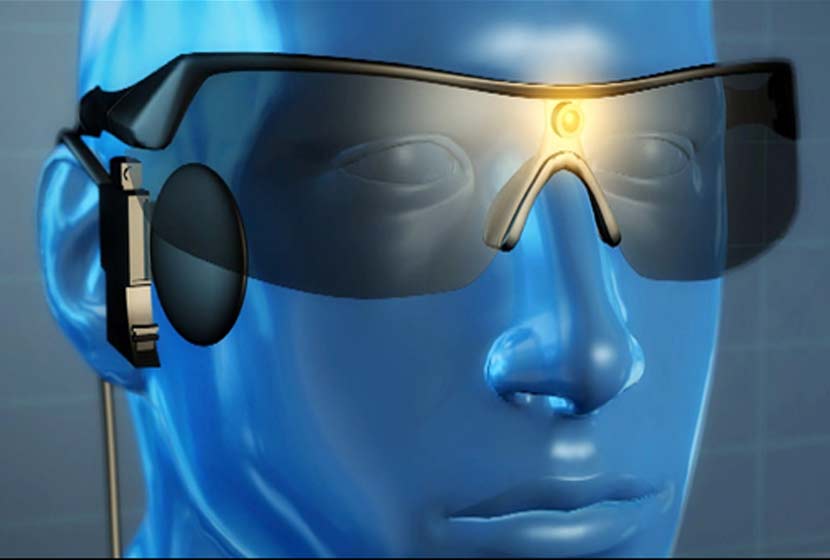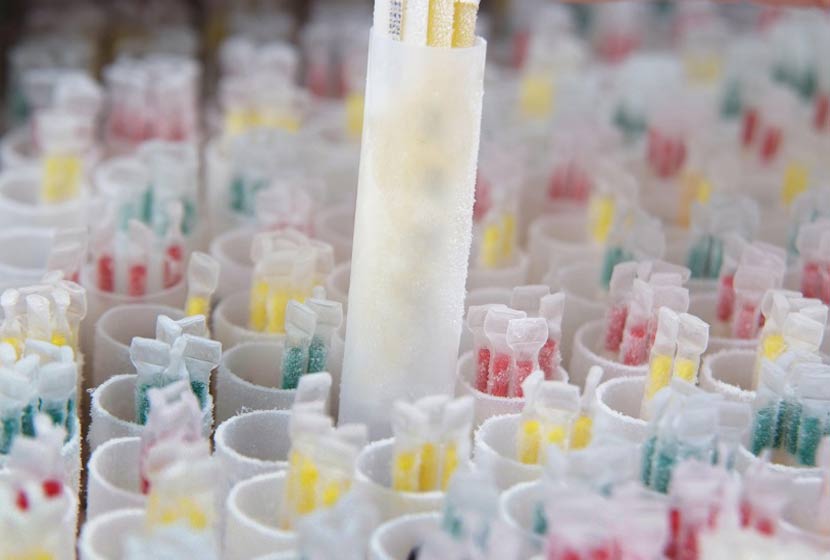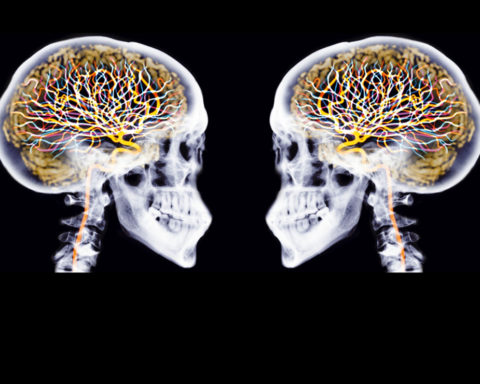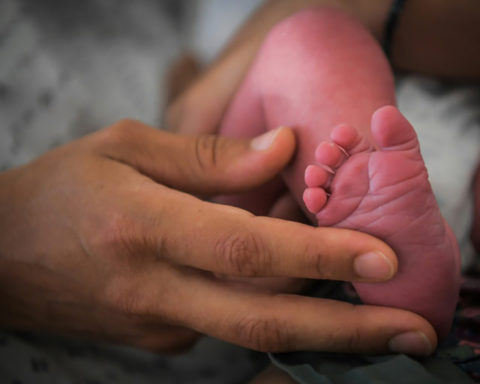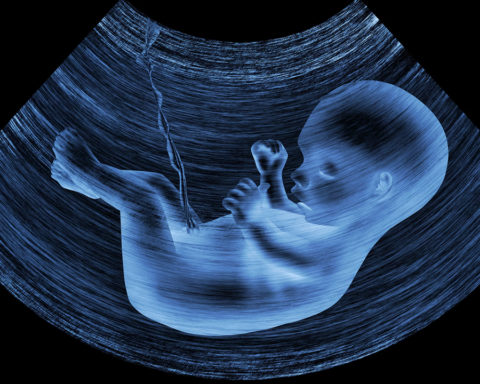Manchester Royal Eye Hospital, in collaboration with Second Sight Medical Products, today announced the first positive tests for the implantation of 'theœil bionic' Argus II in an 80-year-old patient suffering from AMD (Dry Age-related Macular Degeneration) which causes progressive death of retinal cells. This patient, lacking central vision, can now again discern the contour of people.
Aophthalmologist consultant, vitreoretinal surgeon at the Manchester Royal Eye Hospital and Professor of Ophthalmology and Retinal Regeneration at the University of Manchester, Dr. Paulo Stanga says that initial tests on Ray Flynn, an 80-year-old patient from Audenshaw, a suburb of Manchester, showed that he had regained perception in his central vision for the first time in years.
When the Argus II system is turned on, Mr. Flynn can now see the contours of people and objects even with his eyes closed (using only the vision from the implanted eye), proving that he is not using his original residual vision to identify shapes and contours.
This patient's implantation procedure took place on June 16 and lasted four hours. The system was turned on for the first time on July 1. The tests performed that day consisted of looking at a computer screen and identifying black and white patterns placed in different directions. The patient's ability to correctly identify the direction of the lines and the difference between diagonal and horizontal lines shows that the Argus II device provides functional central vision that the patient lacked prior to implantation.
With practice and rehabilitation, his vision will continue to improve over the coming months.
Mr. Flynn is the first patient implanted with Argus II in this trial in England to determine whether or not patients who have completely lost their central vision due to dry AMD can benefit from the Argus II epiretinal prosthesis system," says Professor Stanga. Currently, retinal prostheses on the market are available only for patients with the rare disease retinitis pigmentosa. As far as I am concerned, the first results of the trial are a real success. I look forward to treating other patients with dry AMD with Argus II in this study. We are currently recruiting four more patients for the Manchester trial. »

AMD: one million French people suffer from it
Dry AMD is a much more common disease than retinitis pigmentosa (RP). Worldwide, an estimated 375,000 people suffer from severe RP (1) versus 20 to 25 million people with dry AMD (2). Macular degeneration is age-related and is the leading cause of visual impairment in people over 50 years of age. All forms taken together (dry, wet, ...), this disease affects about 8 % of the French population, but its frequency increases greatly with age: it affects 1 % of people aged 50 to 55, about 10 % of people aged 65-75 and 25 to 30 % of people over 75. If only the late forms of the disease, associated with loss of central vision, are considered, these figures should be about halved. But in the years to come, as life expectancy increases, the incidence of AMD will continue to rise. (Source: INSERM)
Depending on the clinical form and stage of the disease, the manifestations of AMD can be discrete, resulting in decreased visual acuity, reading difficulties (needing more light) and slight distortion of certain objects (straight lines seen as wavy). At a more advanced stage, dark spots appear in the central field of vision ("scotomas") and vision is distorted.
The Argus® II epiretinal prosthesis system
Second Sight's Argus II system produces electrical stimulation to bypass dead retinal cells and stimulate the remaining viable cells, which induces visual perception in people with severe to major peripheral retinal degeneration. Argus II converts images captured by a miniature camera mounted on the patient's eyeglasses into a series of small electrical pulses that are transmitted wirelessly to a series of electrodes implanted on the surface of the retina. These pulses are designed to stimulate the last living cells in the retina, resulting in the perception of light patterns in the brain. The patient then learns to interpret these visual patterns and regains some visual function. The system is software-controlled and can be upgraded, allowing it to perform even better when new algorithms are developed and tested.
Second Sight's Argus II system received CE marking in Europe in 2011 and US FDA approval in 2013. It remains to date the only retinal implant approved worldwide. Argus II has been implanted in more than 130 patients. Several of these patients have been using the system for more than seven years, demonstrating the long-term reliability of the device. The Argus II has been the subject of more than 20 articles in peer-reviewed journals, including the most recent: "Long-Term Results from an Epiretinal Prosthesis to Restore Sight to the Blind" by Ho et al in Ophthalmology, 2015:311 (http://www.aaojournal.org/article/S0161-6420(15)00415-7/abstract).
Central Manchester University Hospitals NHS Foundation Trust (CMFT)
It is a leading provider of specialist healthcare in Manchester, treating over one million patients each year. Its eight specialist hospitals (Manchester Royal Infirmary, Saint Mary's Hospital, Royal Manchester Children's Hospital, Manchester Royal Eye Hospital, University Dental Hospital of Manchester and Trafford Hospitals) are home to hundreds of world-class clinicians and academic staff, most of whom are dedicated to research. http://www.cmft.nhs.uk
The University of Manchester is a member of the Russell Group, a network of UK universities focused on scientific research. It is the most popular university in the UK. It has 20 schools and hundreds of specialist research groups, pioneering multidisciplinary teaching and research worldwide. According to the 2008 Research Assessment Exercise, the University of Manchester is now one of the country's largest research universities, ranked third in the UK in terms of research capacity and has been the home of no fewer than 25 Nobel Prize winners. www.manchester.ac.uk
Professor Stanga, who is also Director of the Manchester Vision Regeneration (MVR) Laboratory at the National Institute for Health Research (NIHR)/Welcome Trust Manchester Clinical Research Facility, said: "On behalf of the Royal Eye Hospital, Manchester, we are honoured to be able to conduct the world's first clinical study of retinal implants in AMD patients. This technology is revolutionary and will change patients' lives by restoring visual function and helping them live more independently. »
"Dry AMD is a common but incurable disease - the leading cause of vision loss in the West. Unfortunately, this disease will become increasingly common as the population ages. For now, we're limiting our study to patients with dry AMD. If this trial is successful, we may recruit patients with advanced and severe wet AMD," adds Stanga.
"Professor Mark Humayun, co-developer of the Argus system, has been using a retinal electrode to stimulate patients with dry AMD and PR since 1992. These two categories of patients were able to perceive light again," says Grégoire Cosendai, Vice President Europe of Second Sight Medical Products.
"Unlike PR patients, patients with dry AMD retain some of their peripheral vision. Patients with severe PR have no peripheral vision. That's why we initially focused on treating patients with RP. In dry AMD patients with severe vision loss who are virtually blind, we are investigating whether the remaining peripheral vision can coexist with the artificial vision of the central visual field and whether both visions can improve overall vision. This is a novel and revolutionary approach. »
Other locations around the world
The Centre hospitalier du Québec Maisonneuve-Rosemont de Montréal has also just implanted the Argus II prosthesis. Today, 13,000 Canadians are affected by this disease.
In early July 2015, Canada's Ocumetics Technology Corp. announced that it had developed bionic" lenses allowing everyone to see three times as much as there is.
In France, it is at the University Hospitals of Strasbourg that in March 2015 the first implementation of the Argus II system took place. The operation was carried out in collaboration with the CARGO Rare Diseases Reference Centre (Rare Diseases in Ophthalmic Genetics) and the ophthalmology department of the University Hospitals of Strasbourg. 36 patients should benefit from a similar operation in the coming months in France.

- Read the article " The approved bionic eye " - UP' Magazine 2014

